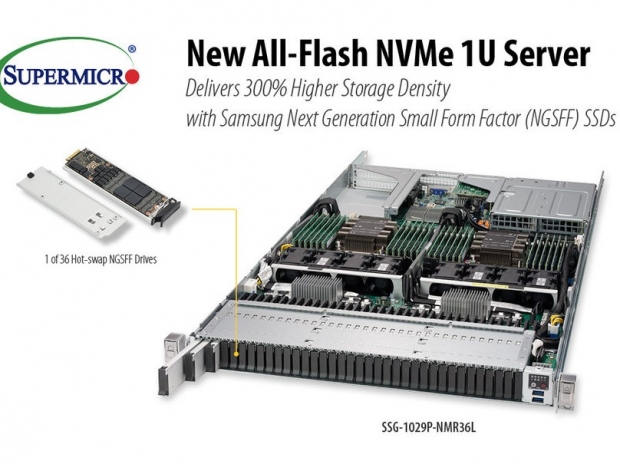All this drives a 1U system which will provide all-NVMe capacity at the petabyte scale. The server currently supports 288TB per system and will support over half a petabyte per system later this year. NVMe technology was developed to provide the lowest latency and offer faster CPU-to-data storage performance for advanced computing. Optimized for the new Samsung NGSFF SSDs, the new Supermicro system delivers 300 per cent better storage density compared to previously available all-flash storage servers that support standard (U.2) SSDs.
Supermicro CEO Charles Liang said that new protocols such as NVMe and RDMA over Fabric were becoming more important and were using outstanding performance characteristics of flash to replace legacy storage form factors and architectures.
"With our adoption of NVMe and NGSFF, Supermicro continues to demonstrate market leadership by delivering the best performance and density in the market place with these advanced 'future proof' solutions."
Samsung Semiconductor Corporate Senior Vice President of Memory Sales and Marketing Jim Elliott, said: "We have been working closely with Supermicro to refine our new NGSFF NVMe SSD solution for 288TB to 576TB per system, so data center decision-makers can see that our NGSFF SSD provides the best performance package for all-flash NVMe enterprise storage in 1U systems."
Supermicro's new all-flash 36 drive NVMe 1U system features dual Intel Xeon Scalable processors, 24 DIMM slots and comes standard with redundant hot-swap cooling fans, power supplies, and hot-swap drive trays for increased serviceability and availability. For accessibility, the solution supports remote system on/off and system management, as well as remote power cycling for each drive.

